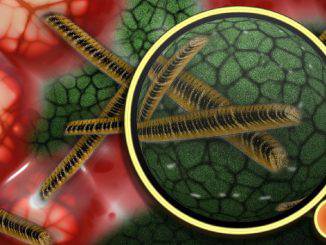
What are probiotics?
Let’s first say that when we often call Kefir “the best probiotic,” we are not entirely correct!
Although the widespread cliché that Kefir is a probiotic may not be wrong, Kefir itself is not a probiotic!
Probiotics are live microorganisms that, when administered in adequate amounts, confer a health benefit on the host.
So, it would be correct to say that Kefir contains the most significant number of these probiotic microorganisms and thus has a potent probiotic effect. Still, as Kefir itself is not a microorganism, scientifically, it should not be called a probiotic.
Many types of bacteria are probiotics or, in other words, beneficial for our health. The most common ones are the so-called lactic acid bacteria, a.k.a. LAB.
The different types of Lactobacillus are the most widespread of them. They exist in Kefir, yogurt, and many other fermented dairy products.
The strains of Bifidobacterium are the second common probiotic that you may find in fermented dairy products.
The probiotic microorganisms, however, may not be only bacteria but also fungi or yeasts. Saccharomyces boulardii is, for instance, a typical yeast considered a probiotic.
What microorganisms are probiotics?
All parts of our bodies that are in contact with the environment are populated with billions of microorganisms. These parts include the skin, guts, mouth, vagina, urinary tract, lungs.
This eco-system of microorganisms is often called a microbiome and may weigh up to 2.5 kg for a single human. All these microorganisms, including bacteria, fungi, viruses, and protozoa, may not benefit us.
The microbial population on our bodies includes three categories:
- A small part is pathogenic microorganisms, known as “bad bacteria.”
- Another part is conditionally pathogenic microorganisms,
and - The third part of the microbiome is the “good,” or beneficial bacteria.
It is precisely these “friendly” or “good” bacteria and yeasts that are called probiotics.
The term “probiotic” is often mixed and confused with the word “prebiotic.” Although linked to each other, these terms are quite different. You can read about this difference in our article titled “Probiotics, prebiotics, and synbiotics,” but simply put; prebiotics are non-digestible components (usually fibers) that stimulate the growth of probiotics.
It is vital for this microbial population in our bodies to be in a correct and delicate balance that doesn’t allow the harmful bacteria to outgrow the good ones, leading to severe or sometimes even lethal illnesses.
The “good microorganisms” known as probiotics are the ones that fight with the pathogenic microorganisms in our bodies and counterweight their negative effects.
For instance, while harmful bacteria like Escherichia coli or Salmonella can cause severe food poisoning, probiotics like Lactobacillus bulgaricus and Streptococcus thermophilus can counterweight their damaging effect and protect us from serious health problems.
The most numerous and essential part of this microbial population is in our guts. A series of research suggested that around 70% of our immune system directly depends on the right balance of the “good” and “bad” bacteria in our guts.
The intake of probiotics plays a vital role in the digestion, elimination, and ultimately – in the stability of our entire immune system.
What are the most prominent features of probiotics?
Here comes the most powerful asset of Kefir!
Most probiotic bacteria are so-called transient bacteria. They stay in our gastrointestinal tract and do their beneficial job only during the standard digestion time and get then eliminated from the body through regular defecation.
To keep our gut’s microbiome in good condition, we must take these kinds of probiotics almost constantly. The most typical product containing such transient probiotic bacteria is yogurt.
Unlike the probiotics in yogurt, however, the probiotic bacteria found in Kefir are not transient. They do not just pass through the digestive tract but actually colonize it and stay there much longer. That’s a significant advantage of Kefir, compared to any other probiotic food, including yogurt.
Another essential characteristic that probiotic microorganisms should have is high survivability.
The notably high acidity levels in our stomach, which decomposes all food and acts as a line of defense against harmful bacteria, is also a challenge for the living probiotic bacteria. To do their beneficial job, they must survive this inhospitable, highly acid environment.
So, it is usually a good idea to drink Kefir (or get other probiotic food) in the mornings when our stomach acidity is at its lowest level. By drinking Kefir in the morning with or right after breakfast, you ensure that the probiotic bacteria travel safely through the acidic stomach and reach their final destination in the small intestines and the bowel, where they play their essential role.
Once they reach their final destination – the small intestines and bowel, the probiotic organisms multiply rapidly. By exponentially expanding their population, they finally outnumber the pathogenic bacteria and compete with them for food and space, making it increasingly difficult for any pathogens to overgrow.
How do probiotics help?
Sometimes the intake of probiotics by healthy people may remain unnoticed. If your gut’s microbiome is already in a healthy balance, the additional intake of good bacteria will strengthen this balance making it more stable and steady.
Indeed, if you are healthy, you can’t get any healthier, but this doesn’t mean that probiotics are useless for healthy people. Even in healthy people, regular intake of probiotic bacteria stabilizes the microbial population of the guts, decreasing the risks of infections caused by harmful bacteria overgrowth.
Probiotics are, however, particularly beneficial for people that already have specific health problems.
A typical example is that probiotics help in preventing some common side effects of antibiotic treatments. Antibiotics are known to destroy the beneficial bacteria in the guts, along with the actual problem-causing microorganisms they are targeting. These emptied niches often get packed with harmful bacteria that secrete toxins, causing inflammation called opportunistic infections. The intake of probiotics during and after antibiotics drastically decreases the likelihood of these infections occurring.

However, not all probiotic bacteria are the same, and not all contribute to treating the same conditions.
For instance, while Lactobacillus bulgaricus and Streptococcus thermophilus are beneficial for treating antibiotic-associated diarrhea, Bifidobacterium bifidum and Lactobacillus Plantarum are instead related to the alleviation of IBS symptoms.
So, suppose you intend to use probiotics to treat a specific condition. In that case, it is a good idea to discuss with your physician or dietician the type of probiotic you should take for your particular case.
On the other hand, as long as Kefir contains the most extensive variety of probiotic bacteria strains (up to 50!), it is pretty unlikely that Kefir will miss the probiotic strain you need.
And be assured: unless you have a specific contraindication (such as a compromised immune system), you cannot get a “probiotic overdose.” Typically, any excess of probiotic bacteria gets naturally eliminated from our body, with no side effects.
What are the primary sources of probiotics?
The main sources of probiotics are fermented foods. However, not all fermented foods are sources of probiotics. Beer and wine, for instance, are fermented, but they are not considered probiotics. To be considered as probiotics, microorganisms in fermented foods must confer specific health benefits to the host.
As we have already said multiple times throughout this website, Kefir, particularly milk Kefir, is undoubtedly the most potent and diverse source of probiotic bacteria that confer a series of proven health benefits to the host.
Let’s remind that milk Kefir contains about 50 different probiotic bacteria and yeast strains that virtually no other food product can provide. Besides their impressive number, Kefir’s probiotic bacteria can also colonize the entire gastrointestinal tract and stay there much longer than any other probiotics.
That’s why milk Kefir is renowned for being the best source of probiotics that ever existed.
Besides milk Kefir, typical sources of probiotics are most other fermented products like yogurt, water Kefir, kombucha, miso, tempeh, sauerkraut, kimchi, sourdough, and some types of cheese.




